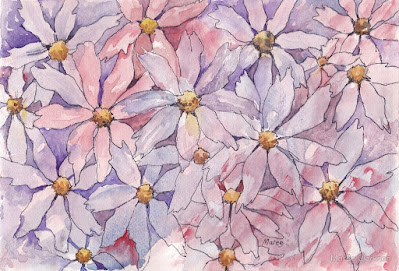W&N watercolour on Bockingford 300gsm – 8″ × 12″
Done from an image kindly supplied by Ann Warrenton. Thank you Ann! I enjoyed doing this difficult subject!
The yucca plant is native to the high deserts of the southwestern United States and Mexico. The yucca has at least 40 species, including Yucca filamentosa, the most common type. Yucca plants are tree-like succulents of the lily family (Liliaceae) with stemless stiff, pointed leaves that end in a sharp needle. The yucca flower is a series of whiteblossoms on a long stalk.
Yuccas have a very specialized, mutualistic pollination system, being pollinated by yucca moths (family Prodoxidae); the insect purposefully transfers the pollen from the stamens of one plant to the stigma of another, and at the same time lays an egg in the flower; the moth larva then feeds on some of the developing seeds, always leaving enough seed to perpetuate the species.
I had quite a few Yucca’s in my previous garden (Tarlton, Gauteng, South Africa), and I have never seen this “yucca” moth, but seeing as my Yucca’s used to flower profusely, there must have been something pollinating them.
















